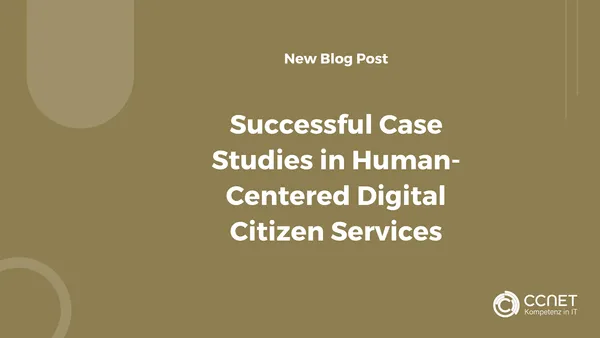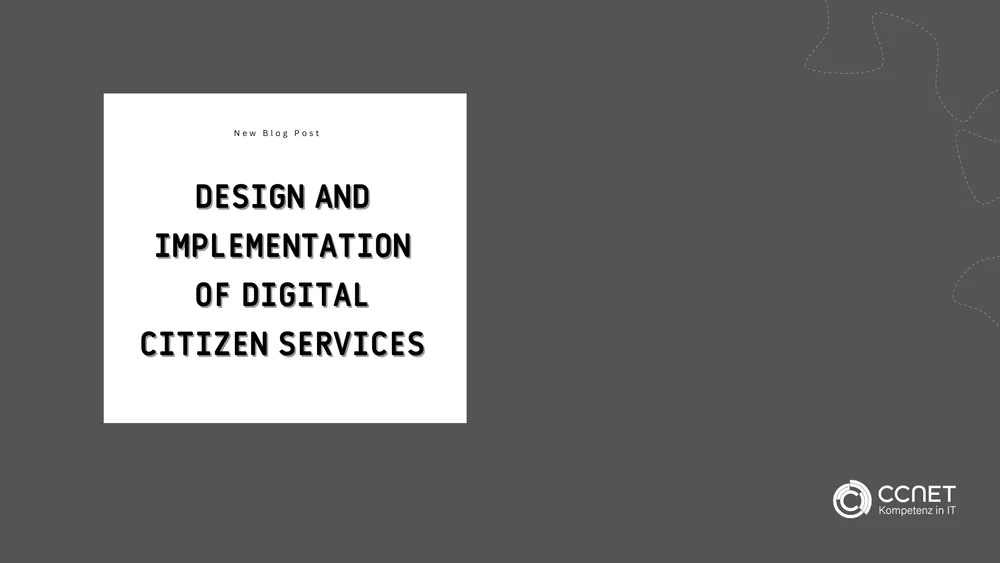
CCNet
Jun 12, 2024 • 2 min read

Successful Case Studies in Human-Centered Digital Citizen Services
In the previous parts of this series, we explored the fundamental concepts of Human-Centered Design (HCD), the role of empathy and deep user understanding, as well as practical approaches to designing digital citizen services. This fifth part delves into concrete case studies to demonstrate how HCD works in practice and how it can enhance the success of digital citizen services.
If you have any further questions, contact us: contact
Why Case Studies Matter
Case studies provide concrete examples of HCD in action, showing how design processes can be implemented in various contexts. They illustrate the challenges designers face and how they overcome them. Moreover, they highlight the value of HCD by demonstrating how this approach can improve user acceptance and satisfaction.
Case Study 1: Improving the City Transport App
A city administration decided to redesign its transport app to make it more user-friendly and accessible. The app was intended to provide real-time information about public transport and help citizens plan their journeys more effectively. Here's how the HCD approach led to a successful redesign:
-
Empathy and User Research: The design team conducted extensive user interviews and ethnographic studies to understand how people used the app and what problems they encountered. This revealed that many users struggled to navigate the app and needed a more intuitive user interface.
-
Prototyping and Usability Tests: The team developed various prototypes and conducted usability tests to improve the app's user-friendliness. This allowed them to identify issues early and develop solutions based on user needs.
-
Participatory Design and Iteration: The team worked closely with users to collect feedback and continuously improve the app. This iterative approach led to a significant increase in user acceptance and a reduction in frustration when using the app.
-
Outcome: The redesigned app was successfully launched and well received by the citizens. It was easier to navigate, provided better information, and allowed for more efficient travel planning. User acceptance increased, and the city administration received positive feedback on the improved user experience.
Case Study 2: Online Citizen Services for Better Interaction with the Government
Another city administration decided to modernize its online citizen services to improve the interaction between citizens and the government. The focus was on making digital processes for applications, permits, and other citizen services more accessible. Here's how HCD helped guide this process successfully:
-
Co-Creation and Design Workshops: The design team organized workshops with citizens to understand their needs and expectations for digital citizen services. This led to a series of ideas on how to make the services more user-friendly.
-
Persona Development and Customer Journey Mapping: The team created personas to represent different user groups and mapped the customer journey to identify critical touchpoints. These approaches helped consider the diverse needs of citizens and guide the design process accordingly.
-
Usability Tests and Feedback Loops: Through continuous usability tests and feedback loops, the team ensured that the digital services remained user-friendly and accessible. This iterative approach led to a gradual improvement process.
-
Result: The modernized online citizen services were successfully launched, resulting in a significant improvement in interaction between citizens and the government. Citizens could process their applications faster, and the government could operate more efficiently. User acceptance increased, and citizens appreciated the improved services.
Conclusion
These case studies demonstrate how Human-Centered Design can enhance the success of digital citizen services. By incorporating empathy, participatory design, and continuous iteration, designers can create digital solutions tailored to the needs of citizens. The key to success lies in actively engaging users and being willing to adapt the design process to their needs and expectations. HCD is a powerful approach that allows for the creation of digital citizen services that are more user-friendly, accessible, and successful.


